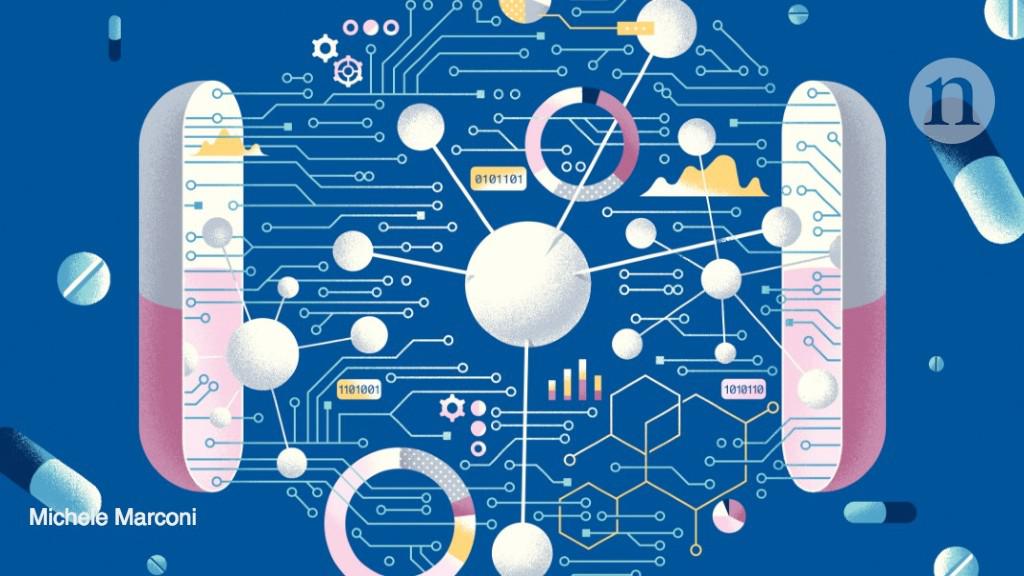Dr Lee Harland, Founder and Chief Scientific Officer, SciBite (an Elsevier company).
In the last decade, technology has revolutionized life sciences. Across every stage of the drug discovery cycle, we’ve seen the emergence of technologies capable of augmenting scientists and leading to faster breakthroughs.
The global pandemic has further highlighted what we can now achieve. AI is aiding science by processing huge volumes of clinical and patient data to accelerate research into new vaccines and therapeutics. In laboratories, innovations in instrumentation and robotics are automating experiments—making them faster, cheaper and more reproducible. And in clinical development, sensors and wearable technologies are transforming how trials are conducted by enabling remote data collection and patient monitoring.
For scientists, all this digitally driven transformation has meant they’ve had to adjust fast. Learning new skills, handling new data streams and embracing change. For pharmaceutical business leaders, the challenge has been different but no less pressing. They decide what technologies and solutions to spend precious R&D budget on, and when to invest. Despite this remarkable pace of change, and the speed with which pharmaceutical CEOs and CTOs have had to get to grips with new technology, there’s more disruption on the way in the next 12 to 18 months.
Let’s look at four of the most promising disruptive technologies.
Quantum Computing
MORE FROMFORBES ADVISORBest Travel Insurance Companies
ByAmy DaniseEditorBest Covid-19 Travel Insurance Plans
ByAmy DaniseEditorSince 1994, there has been a steady increase in quantum computing research, resulting in more than 48,000 publications, as interest in the field continues to grow. Quantum computing is a high-risk, high-reward field, with some nations already leading the way; the 10 institutions with the highest publication output are in China, France, Canada, the U.S., the U.K. and Singapore. Recently, Google’s quantum powered AlphaFold breakthrough in protein folding has highlighted the potential of quantum computing to accelerate pharmaceutical research.
More use cases are emerging, and collaborative industry initiatives like the nonprofit Pistoia Alliance Quantum Computing Community of Interest are working to maximize the positive impact of quantum computing on the life sciences.

Blockchain
Although blockchain is currently more commonly associated with cryptocurrencies and NFTs, the intrinsic trust and immutability of transactions built into distributed ledger technology has some potentially powerful use cases throughout the life science and pharmaceutical ecosystem. One application of blockchain in pharmaceuticals is to provide an auditable and secure supply chain.
This would make drugs, ingredients and substances traceable and better ensure provenance, which is essential to protecting patient safety and ensuring the quality of drugs entering circulation. This could also be applied to secure and share sensitive research and patient data, allowing clinical data to be used for more effective research while controlling access and privacy. Though blockchain technology is over a decade old, it is still in its infancy and continues to evolve to tackle some of the current limitations.
3D Printing
Also known as additive manufacturing, 3D printing is used to make everything from jewelry to shoes to car parts. In a heavily regulated sector like pharmaceuticals, progress is necessarily slower, but the potential of 3D printing to improve patient care immeasurably is emerging—from printing therapeutics and new medical devices to new organs for transplant. One of the key trends driving interest is the shift toward precision medicine.
Physicians and patients are increasingly looking for a more customized approach to treatment, which is where 3D printing can help. Additive manufacturing opens the door to production of drugs on demand with carefully tailored qualities depending on the individual patient—like personalized dosages and drug combinations, in a particular size and with certain release characteristics.
Natural Language Processing
It’s almost certain that, of this list, Generative Pre-trained Transformer 3 (GPT3 ) will be the one technology most readers are unlikely to have heard of. Yet, it has the potential to completely upend how the life sciences sector (and several others, like finance and manufacturing) operate.
GPT3 is a neural network—an AI-driven language model that uses deep learning to mimic human speech and text. On Twitter, one early reviewer said it was like “seeing the future.” It can write anything from a song to an article to lines of code on demand. Research finds that GPT models can “outperform human-level performance” at reasoning to answer complex questions and connect nuanced ideas. Its application has many possibilities—from accelerating drug discovery and development to powering medical chatbots for patients.
Data will underpin success.
These four innovations will require scientists to develop new skills and be open to new ways of working. But crucially, they will also require a shift in companies’ data science strategy.
The success of new technology in any guise—from a distributed ledger to a neural network—will rely on how well pharmaceutical companies manage their data. The key is making it “machine-ready.” Organizations need to de-silo, standardize and harmonize data sources to transform unstable text and images into data that are enriched, annotated and machine readable. When these data “feed” algorithms, analytical systems and computing models, outcomes are more accurate and reliable.
In order to truly realize the benefits of any technology and retain their competitive advantages, pharmaceutical CEOs and CTOs first need to invest in better data management. Clean, machine-ready data will be the one common thread that will underpin success, whatever the overarching technology. How much companies invest in data stewardship now will decide their future.
Forbes Technology Council is an invitation-only community for world-class CIOs, CTOs and technology executives. Do I qualify?




